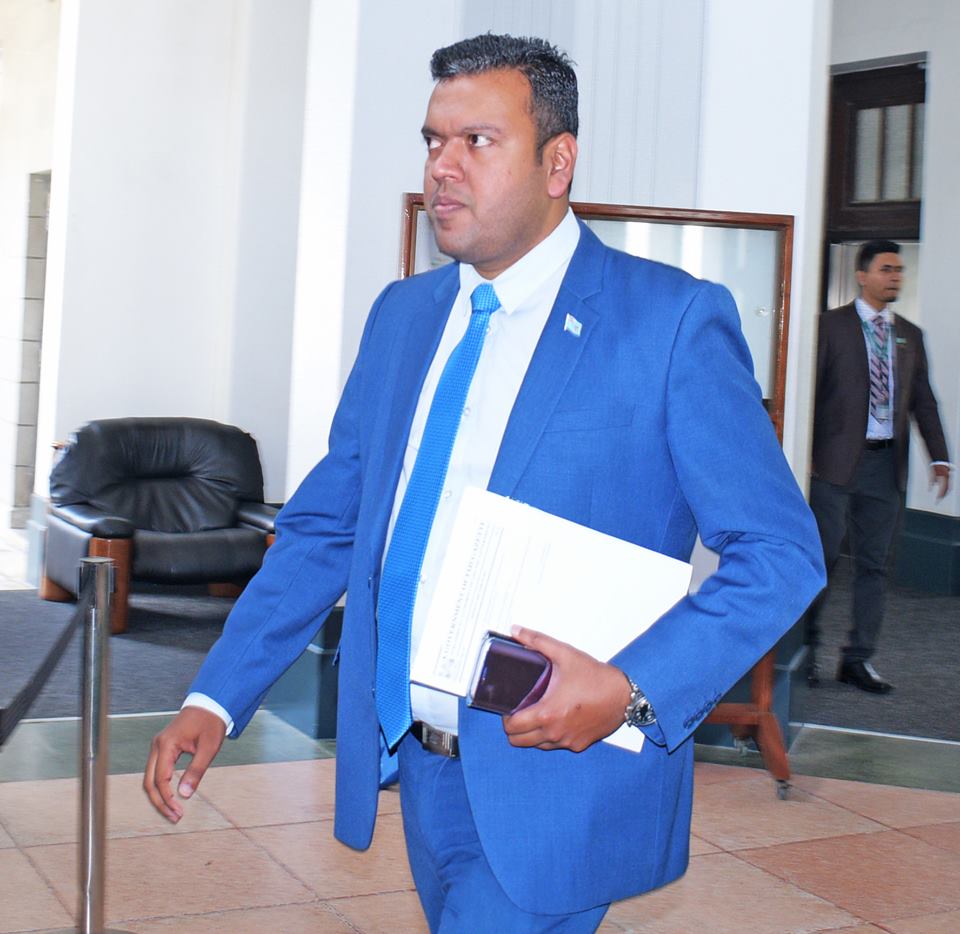MINISTER for Lands and Mineral Resources Ashneel Sudhakar last Friday explained to Parliament the process involved in having a piece of land at Thurston Garden to house the proposed Indian High Commission chancery.
Responding to a question on how the allocation was done and whether any consultation was carried out, Mr Sudhakar said the Suva City Council was approached by the Ministry of Foreign Affairs and the Ministry of Lands and Mineral Resources in 2014 on the possibility of the Council surrendering about 6467 square metres of land near the Suva Museum.
He said this was a portion of the total area of 53,494 square meters to allow a chancery to be built by the Indian government.
Parliament was told the area that was being allocated to the Indian Embassy covered 6467 square metres and that portion of the land was covered by trees and shrubs beside the British High Commission’s residence; and it was an unused part of the garden.
“The area designated currently is for car park and the rest of it is to be retained and the purpose for the public access will still be available to the car park,” Mr Sudhakar said.
“The Ministry of Foreign Affairs had agreed with the government of India for the Fijian Government to allocate the subject site for the above construction and the government of India to allocate a land parcel to the Fijian Government in New Delhi to construct the facility for Fiji’s Embassy in India.
“At the time of the allocation in 2014, that portion of land in New Delhi was valued at $US55million and currently it is somewhere around F$107m-F$110m. The land is situated in Chanakyapuri in New Delhi, the most prime area of New Delhi where other diplomatic missions are located.
“Fiji was fortunate to get this piece of land as no other country was able to secure a block of land within this prime area.”
Mr Sudahkar said the Government identified the subject land to be the most appropriate and suitable for the Indian High Commission, which would house the embassy, cultural centre and the chancery.
Consequently, on November 19, 2014, a diplomatic agreement through a Memorandum of Understanding (MOU) was signed between the Indian government and the Fijian Government to further consolidate and develop traditional friendship and multi-faceted cooperation between the two countries.
“This is part of the reciprocal arrangements that governments enter when they talk about building chanceries or embassies and we have precedents in this regard. The first being where the US Embassy was supposed to be moved from the city area to another part of Suva, it is now currently moved to Tamavua, there was a Crown grant where a piece of State land in the most prime location of the municipality and the highest peak of the municipality was converted from Crown lease; a Crown piece of land to freehold and then subsequently transferred to the US Embassy, the Government of United States.”
He said Fiji had also benefitted from such bilateral exchanges through the support of countries like Australia.
“It should be noted that Canberra gave us a piece of land in Canberra to build our embassy free of charge at that time and the Papua New Guinea Government will confirm that a piece of land for Fiji is to be given to build our chancery in PNG.
“This arrangement with PNG will be important to Fiji given the high cost of real estate in Papua New Guinea and currently, the rent that we will be paying in PNG will be the highest amongst all other embassies. That actually shows the value of the land that we are given in PNG to build our chancery.
“Mr Speaker Sir, that reciprocal arrangement greatly benefits countries like Fiji which is still a developing country and affordability of land can become a challenge. When we are to acquire land in foreign countries, they are valued at a very high rate as former Minister for Lands would know. Therefore, when we give a portion of land in exchange of a higher land value, it is important that we take the deal.”
Responding to questions on whether any consultation was made, Mr Sudhakar said that following the MOU, the Ministry for Lands carried out the survey works.
He said the works were approved by the Suva City Council and the provisional approval by the Director of Town and Country Planning for rezoning of the land from recreational space to special use for an embassy, which had been notified to the public and the objection period started on January 25, 2019.
“The process of objection is open for 30 days from the date of advertisement. At the close of the objection period, the Director of Town and Country Planning will take a decision on confirming the final approval based on all the paperwork, including the inputs of the general public and the objections received and the overall requirements set by the law.”
Quick facts:
- The Thurston Botanical Gardens was established in 1881 along the Waimanu Road by Sir John Bates Thurston
- It was later moved to its current site in 1913 and eventually renamed as Thurston Gardens in 1976
- Over the years, this land has been subdivided into these various lots: Government House, Botanical Gardens, Public Service Commission Building, Fiji Museum, and the most recent being the British High Commissioner’s Residence – 1989.
Source: Ministry of Lands




